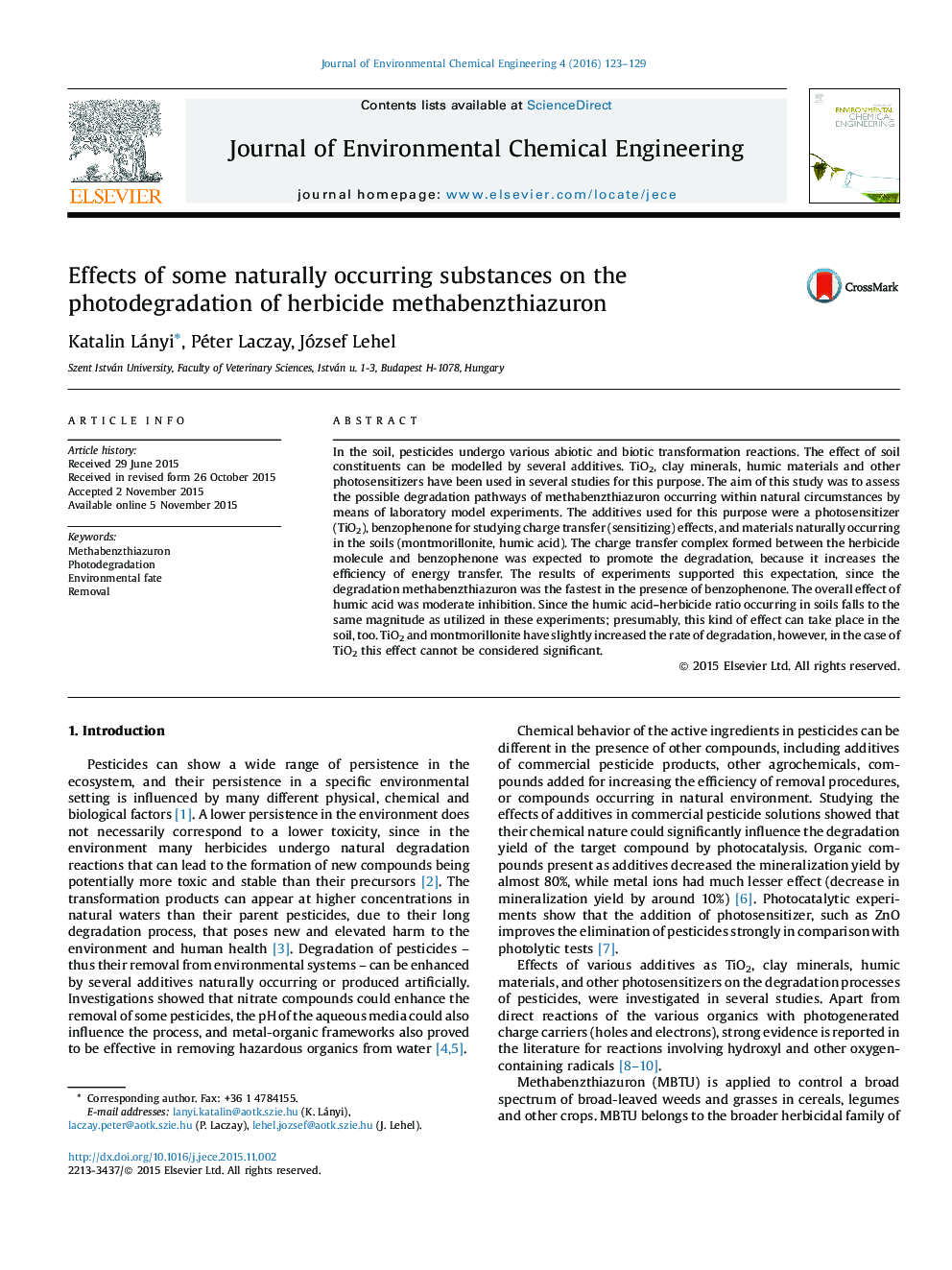| Article ID | Journal | Published Year | Pages | File Type |
|---|---|---|---|---|
| 221867 | Journal of Environmental Chemical Engineering | 2016 | 7 Pages |
In the soil, pesticides undergo various abiotic and biotic transformation reactions. The effect of soil constituents can be modelled by several additives. TiO2, clay minerals, humic materials and other photosensitizers have been used in several studies for this purpose. The aim of this study was to assess the possible degradation pathways of methabenzthiazuron occurring within natural circumstances by means of laboratory model experiments. The additives used for this purpose were a photosensitizer (TiO2), benzophenone for studying charge transfer (sensitizing) effects, and materials naturally occurring in the soils (montmorillonite, humic acid). The charge transfer complex formed between the herbicide molecule and benzophenone was expected to promote the degradation, because it increases the efficiency of energy transfer. The results of experiments supported this expectation, since the degradation methabenzthiazuron was the fastest in the presence of benzophenone. The overall effect of humic acid was moderate inhibition. Since the humic acid–herbicide ratio occurring in soils falls to the same magnitude as utilized in these experiments; presumably, this kind of effect can take place in the soil, too. TiO2 and montmorillonite have slightly increased the rate of degradation, however, in the case of TiO2 this effect cannot be considered significant.
Graphical abstractFigure optionsDownload full-size imageDownload as PowerPoint slide
